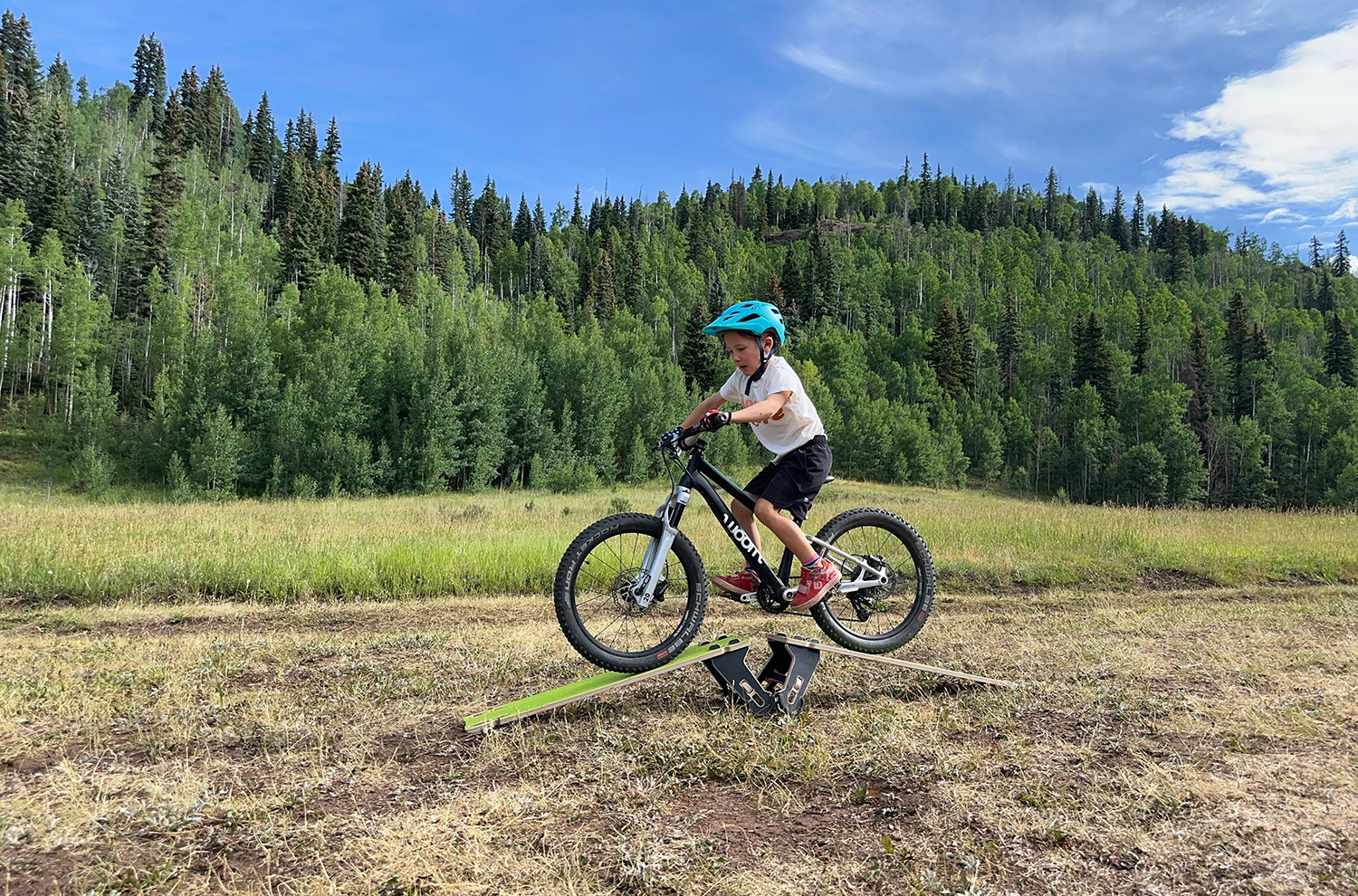
Intro
Most of our reviews are pretty long — and take a long time to produce — because we want to provide enough info for you to determine whether the gear we tested will work well for you.
But we get asked to check out an increasingly wide range of products, and sometimes, we just want to tell you about something we’ve been using and loving lately.
That’s where this monthly series — Stuff We Like — comes in. It’s where we keep you current on a broad range of things we’re digging. Check out this month’s submissions, and let us know if there’s any gear you’ve been loving!
Salewa Mountain Trainer 2 Mid GTX Boots
MSRP: $290 USD
Zack Henderson: I just got back from a trek in Italy, and it was the longest bit of time and mileage I’ve spent in hiking boots in quite a while. Despite my long history of having issues with various boots over the years, I was genuinely surprised (in a good way) by just how well my Salewa Mountain Trainer 2 Mid GTX boots treated my feet.
I’ve historically struggled with blisters and some Achilles issues, mostly stemming back to my days of competitive running in high school where I did some damage to my feet and ankles. I have narrow heels and a narrow forefoot mated to a high arch, which makes finding a locked-in and hotspot-free fit a bit tricky at times. Plus, boots that are too stiff tend to put too much strain on my troubled Achilles tendon.
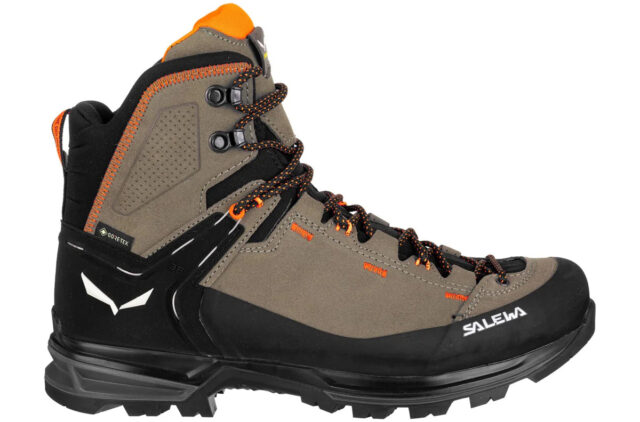
The Salewa Mountain Trainer 2 Mid is easily the most comfortable boot I’ve tried out of the box, managing to feel fairly plush and forgiving while also having exceptional heel hold. I worried about how the fit might change as the boots broke in, but over the past 2 seasons of backpacking and trekking, they’ve remained both supportive and comfortable. In the durability department, rocky and scramble-filled trails haven’t phased the Mountain Trainer 2 Mid, and the mid-stiff sole nicely balances ground feel with support on uneven surfaces. If I have one gripe, it’s that the Vibram soles could be slightly stickier on wet rock, but it hasn’t been an issue in most cases, and the durability has been solid compared to other boots with softer rubber.
Boots are a deeply personal purchase. But for me, after short relationships with other boots in the past several years, the Salewa Mountain Trainer 2 Mids are here to stay.
Nemo Tensor All-Season Ultralight Sleeping Pad
MSRP: $199.95–229.95
Luke Koppa: I’ve been testing some of the latest ultralight all-season sleeping pads to get a better idea of how far the market has come in the past several years. On paper, Nemo’s Tensor series looks very appealing, and my initial testing has confirmed that.
I have the Tensor Ultralight All-Season in size Regular Wide, which is a 25” x 72” rectangular shape (64 x 183 cm); Nemo also offers this pad in 20” / 51 cm widths (rectangle & mummy silhouettes) and a 25” x 76” “Long Wide” size (64 x 193 cm).
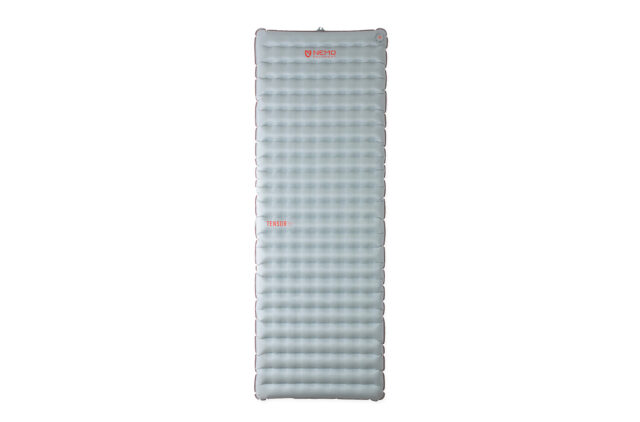
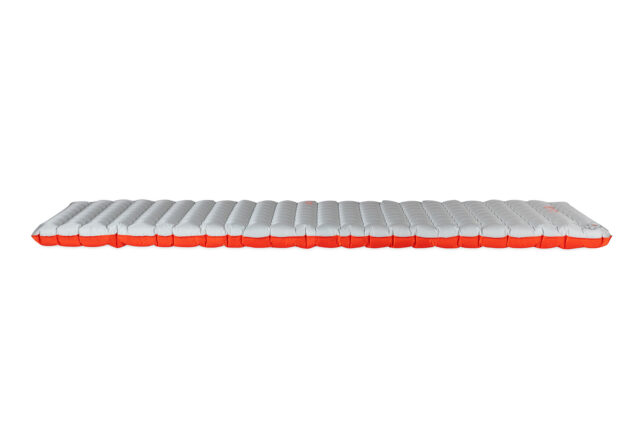
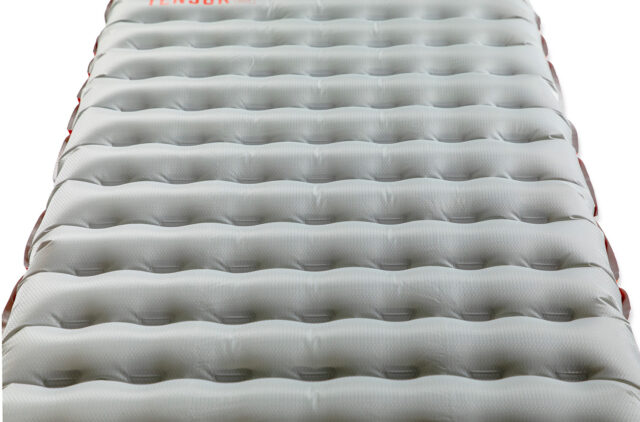
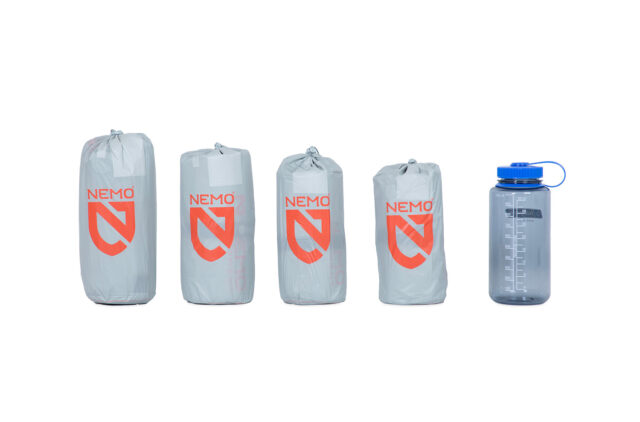
They’re all 3.5” / 9 cm thick and have a 5.4 R-value for insulation, which should cover you down to temperatures slightly below freezing. My Regular Wide version weighs about 530 g / 1 lb 3 oz for just the pad and packs down to be just a tad taller than a 32-oz Nalgene.
All of that makes the Tensor Ultralight All-Season a very light and compact pad for its size and level of insulation. And so far, my take is that it accomplishes that while also offering really impressive overall comfort.
(Nemo also offers the Tensor Elite and Tensor Trail, which weigh less and have lower R-values, as well as the heavier and winter-oriented Tensor Extreme.)
As a side sleeper, I’m drawn to thicker pads that don’t leave me with my hips hitting the ground, and the Tensor Ultralight All-Season has checked that box. I can’t yet attest to long-term durability, but I haven’t noticed any significant decrease in air pressure / firmness over the first several nights I’ve used it.
The Tensor’s baffle design seems to strike a very nice balance between support and give; during my first night with it, I was able to arrive at a level of air pressure that kept me off the ground without feeling too firm and ‘tippy’ when on my side, or excessively bouncy when I shift my weight around.
In these regards, it was notably better than my Big Agnes Q-Core SLX, and a bit better than a reference pad in this class, the Thermarest NeoAir XLite NXT MAX (though I still need to do more fine-tuning with pressure in that pad).
The Tensor Ultralight All-Season pad is also a bit quieter than average, relative to other pads I’ve used with similar specs; not a necessity for me, but a nice touch.
The Tensor pads use a similar valve system to many pads these days — you pop open one cap to add air via a one-way valve, and then pop the second cap to allow all the air to escape when packing up the pad. I’ve had good experiences with these types of valves, and that’s holding true with the Tensor. It doesn’t allow you to fine-tune by letting air out (a feature of Thermarest’s NeoAir pads), but that hasn’t been an issue for me so far.
Also, like many pads these days, the Tensor comes with a sack that doubles as a pump, but I almost always leave those at home and just inflate with my lungs.
I’ll have to wait till Autumn to test this pad’s colder-weather performance, but its stated R-value suggests that it should work as a 3-season option in the mountains surrounding my home in the Gunnison / Crested Butte valley. I have not found it too hot for mid-summer use, but I’d want a true cold-weather pad for winters around here, when nighttime temps can often dip below -20°F / -29°C.
Overall, I’m really impressed by how well the Tensor Ultralight All-Season combines low weight with overall comfort and ease of use. I’ll have more to say in the future, so stay tuned.
MTB HOPPER Skinny 2025
MSRP: $529
Kristin & Linden: I kicked off the spring with some ambitious goals – one of them was to design a mountain bike trail around our property to help my son develop technical skills for his newfound love of mountain biking.
If you Google how to build a mountain bike trail at your house, you’ll encounter numerous videos of people creating intricate trail systems on large plots of land. We have a lot less to work with, roughly half an acre, but my family and I flagged what we hoped would be a fun course.
The summer flew by, and before we knew it, the blue flagging (now hidden under wildflowers) was the only thing we had to show for the course. Well,
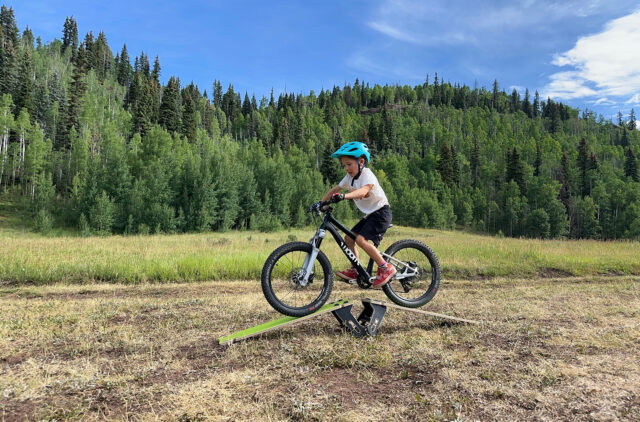
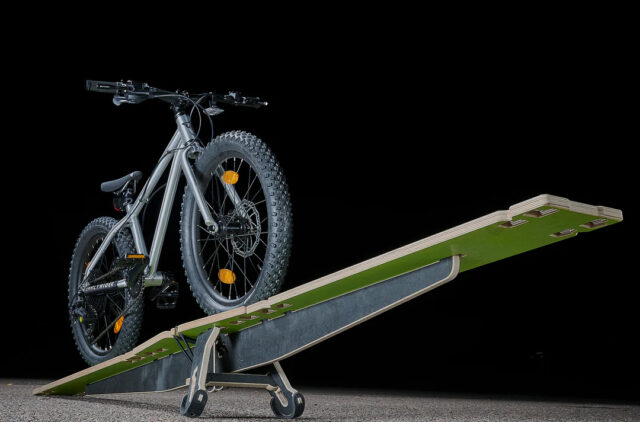
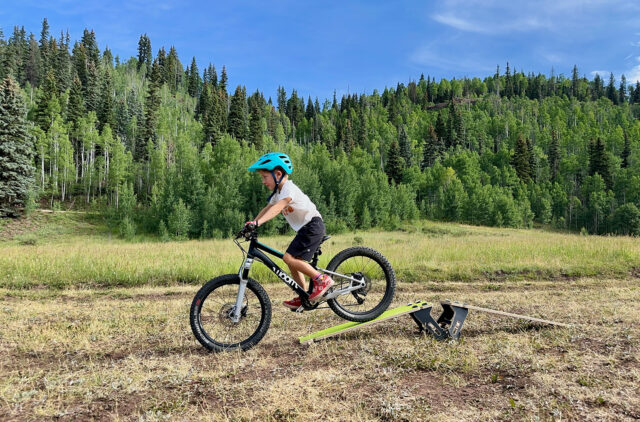
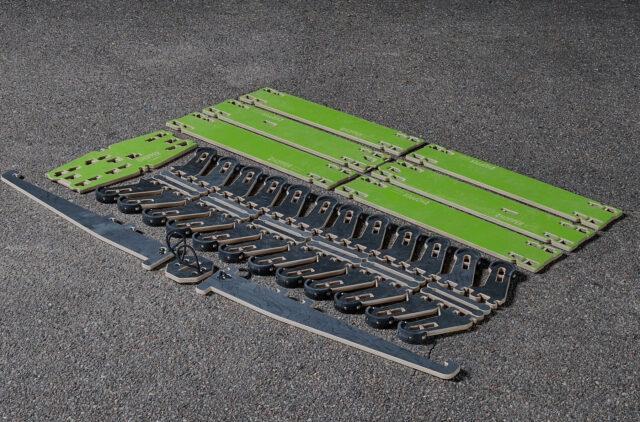
that and the MTB HOPPER Skinny 2025, which we had planned to include in the flat section of our course. I still hope to make the mountain bike course a reality, but thankfully, the Skinny 2025 has already started to help promote skills practice and confidence.
MTB HOPPER is a fairly new company that specializes in designing MTB, BMX, and moto ramps, landings, and more. Designed by experienced riders, their products are modular and constructed of high-quality, weather-resistant plywood. The Skinny is ideal for beginner to experienced riders since you can use it to construct a variety of different options, like small jumps, a boardwalk, a seesaw, and so much more. The system is easy to put together thanks to the included instruction sheet. And the pieces can be stacked and stored in the boxes they were shipped in. We recently took the Skinny on a biking / camping trip and set it up in a nearby field. My son tested his skills, and it was a fun activity to have at camp.
For reference, we live less than a mile from a pump track and amazing mountain bike trails. Despite this, the Skinny 2025 has been great to have. Whether it’s for a quick after-dinner session or something to bring out at a birthday party, we are excited to watch my son grow with it. And we love that we can use and test our skills right along with him (the weight limit is 290 lbs / 130 kg).
Ibex GOAT Short Sleeve Crew
MSRP: $85
Luke Koppa: I love a simple, lightweight, merino-wool T-shirt. It’s usually what I’ll grab for any summer and shoulder-season activity, because they tend to breathe well and let me get away with multiple uses before feeling the need to chuck them in the wash. Plus, the ones with minimal branding and a not-super-slim fit align well with my personal aesthetic preferences for casual, everyday apparel.
Ibex’s new GOAT Short Sleeve Crew is the latest I’ve been testing, and it’s a good one. The GOAT’s 150-g/m2 fabric is heavier than I prefer for the hottest summer days, but I’ve found it comfortable in the vast majority of summer conditions in the mountains of
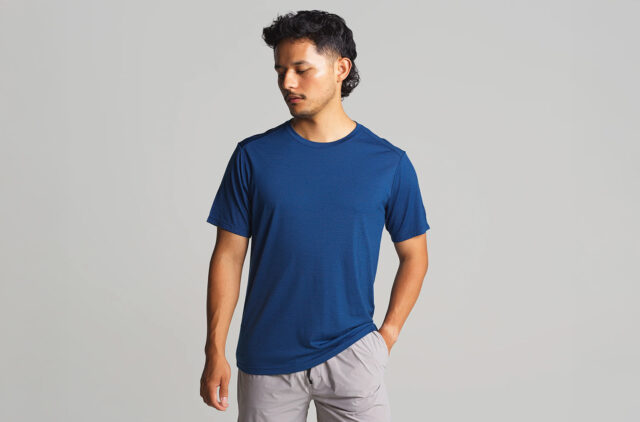
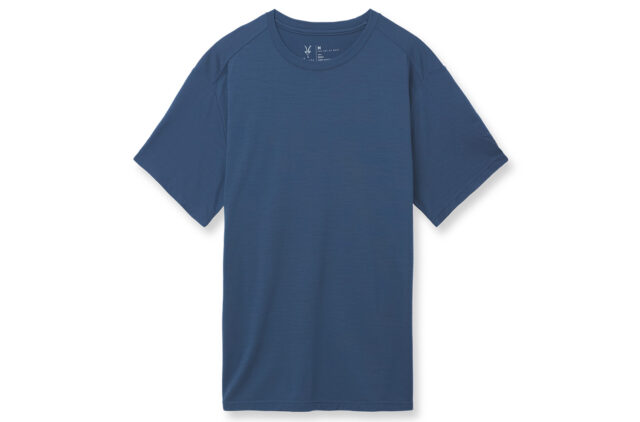
Colorado, and I’ll keep grabbing it as a baselayer when the temperatures start dropping. To me, it feels just as soft (if not softer) than the average high-end merino baselayer fabric, and the fact that the merino fibers are wrapped around a nylon ‘core’ has me optimistic about its long-term durability (Ibex says the fabric is 89% merino wool / 11% nylon).
In terms of fit, I’d put the GOAT Crew just slightly on the slimmer and shorter end of the spectrum. For reference, I’m 5’8”, 155 lbs (173 cm, 70 kg) and prefer a looser, boxier fit for T-shirts, so I often size up to a Large. The size Large GOAT Crew fits similarly to some of my size-Medium T-shirts that have looser fits. If you’re not specifically looking for an oversized fit, I’d just stick with your regular size.
Overall, this is just a solid, comfy, do-anything merino T-shirt. It’s not ultra-thin, but it breathes well enough to keep me comfortable while I’m working up a sweat in temps up to about 80°F / 27°C, and I can usually get a few days of use out of it before it really starts to smell. I appreciate its minimalist aesthetic, and it will continue to have a place in my rotation of shirts I grab when I’ll be doing any sort of activity.
La Sportiva Aequilibrium Hike GTX
MSRP: $279
Luke Koppa: Alongside my testing of sleeping pads, I’ve also been trying some new footwear, from ultralight trail runners to day hikers and more substantial trekking boots.
One that caught my eye was La Sportiva’s new Aequilibrium Hike GTX. Fellow reviewer, Paul Forward, is a huge fan of the Aequilibrium ST / LT for the rugged mountains around his home in Alaska, but that light-mountaineering boot is pretty dang stiff. I prefer something more flexible for the on- and off-trail hiking, scrambling, and backpacking I do in Colorado, and the Aequilibrium Hike seemed interesting for that use case.
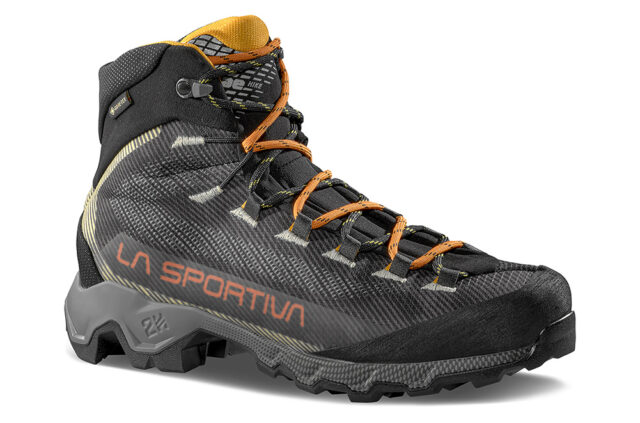
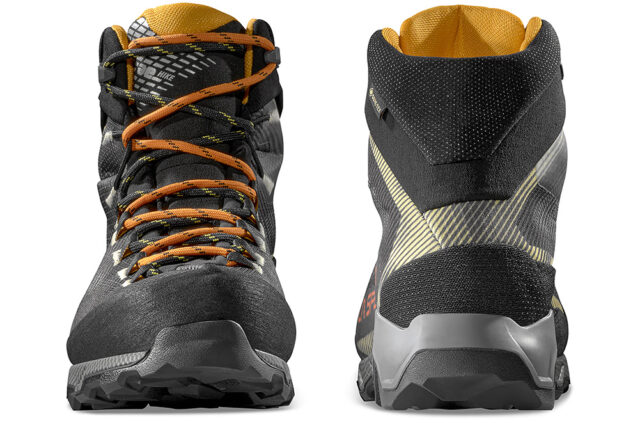
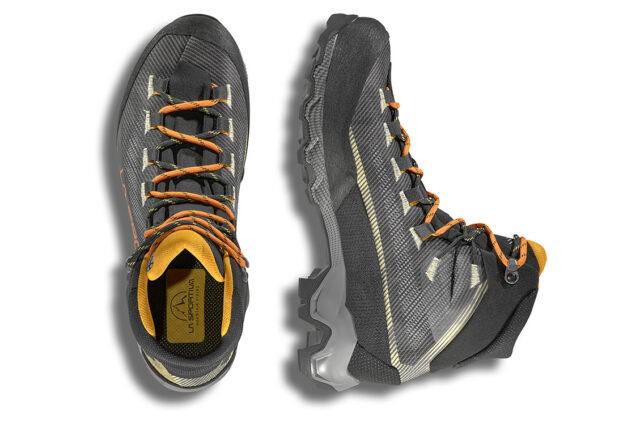

In short, it takes the general light-mountaineering ethos of the Aequilibrium ST / LT and applies it to a lighter, shorter, and softer design that is better suited to what Sportiva describes as “mixed-terrain hiking.”
So far, I’ve been very impressed by the grip, ankle security, and ankle flexion of the Aequilibrium Hike. In terms of stiffness, I’d say it’s on the softer side of most backpacking boots and the stiffer side of most generalist day hikers. Compared to my Salomon Quest 4D, the Aequilibrium Hike feels pretty similar, if not a bit stiffer; compared to the classic Lowa Renegade, I’d say the Aequilibrium Hike is similar but maybe a tad softer.
As for fit, I suspect some people may want to go up a half size. My feet measure 26.5 cm long by ~100 mm wide (10.4” x 3.9”), and I usually wear a US Men’s size 9.5 or 10 for hiking shoes and boots. I have the Aequilibrium Hike in a size 42.5 / US Men’s 9.5, and it fits me really well overall, but I do get a bit of contact on the top and end of my big toes when hiking downhill. In contrast to many previous Sportiva shoes I’ve used, the Aequilibrium Hike has not felt too narrow around my midfoot. I hope to test the slightly stiffer and taller Aequilibrium Trek GTX in the future, in which case I’ll try a size 43 / US Men’s 10.
So far, the standout trait of the Aequilibrium Hike is how well it locks my ankle and heel into place — while also allowing my ankle to flex fore-aft on inclines. I’m not sure I’ve ever had a comparable boot that offered a similarly precise fit around my somewhat ‘low-volume’ ankle without causing pain around my more ‘medium-volume’ midfoot. This combo has been excellent on steep uphills, and it keeps the Aequilibrium Hike from feeling excessively rigid during flatter sections of smooth trail (at least for my preferences — best bet is try them on yourself).
This boot’s Vibram “Spring-Lug” outsole has been quite good so far. I look for soles (like this one) with bigger, more open lugs since those tend to come in handy when scrambling up talus / scree fields, and the Aequilibrium Hike has so far been quite good there, while also being fine on very mellow scramble-like moves. The big, aggressive lugs under the heel also do an impressive job of maintaining traction when descending loose rock and other slippery conditions.
The rubber of the outsole seems to fall around the middle of the spectrum in terms of tackiness. It isn’t very thick, but La Sportiva says you can re-sole the boot at an approved cobbler if / when it wears out. I’ll be putting a lot of miles on this boot and will report on long-term durability in the coming months.
The other things I’ll be keeping an eye on are this boot’s very stretchy ankle collar and the cord loops that serve as the ankle lock-down point for the laces. I put a lot of force (and I assume friction) into the latter when lacing up the boot, so we’ll see how they hold up. As for the ankle collar, it adds to this boot’s fore-aft ankle mobility, but it makes it a bit tricky to put on. Because the ankle pocket is pretty deep / extends behind the ankle, the boot isn’t the easiest to get on for me, and I wouldn’t mind if Sportiva added a non-stretchy heel strap to yank on during that process.
In terms of ideal hike length and pack weight, so far I’m liking the Aequilibrium Hike for everything from more technical day hikes to weekend backpacking trips with a pack weight around 40 lbs / 18 kgs. Preferences regarding footwear stiffness and pack weight vary massively, but in the future, I’ll be testing how my feet get along with this boot during longer trips with heavier loads. For reference, I often prefer to just use soft but highly cushioned trail running shoes (e.g., Topo Athletic MTN Racer) for on-trail day hikes and short backpacking trips; I prefer more substantial (but not super stiff) backpacking boots (e.g., Salomon Quest 4D) for multi-day trips and heavier loads.
I’d sum up the Aequilibrium Hike as a high-end, lightweight hiking boot that makes the most sense for those who will spend time in rougher and steeper off-trail terrain. There are plenty of cheaper and softer alternatives that would likely serve you better for on-trail day hikes, including Sportiva’s new Prodigio Hike (which I’m also testing). But the Aequilibrium Hike has stood out to me when I’m hauling anywhere from 10–40 lbs (4.5–18 kgs) in mountainous terrain that falls short of 5th-class climbing.
Pearl Izumi Women’s Canyon Tech Snap Jersey
MSRP: $95
Kristin Sinnott: I’m not a fan of being overly warm, especially when exercising. Since moving to Crested Butte and its very moderate summer climate, my heat tolerance has only gotten worse. The Canyon Tech Snap Jersey is a new product from Pearl Izumi, and it’s the most effective shirt I’ve found for staying cool in warm weather. Its “PRO Transfer Mesh” fabric is 94% recycled polyester and 6% spandex and features rectangular perforations throughout that allow air to flow in and out easily. The fabric is soft, lightweight, and has a little stretch to it.
The fit is best described as relaxed for an athletic top, with an overall cut that promotes better airflow. The torso runs slightly
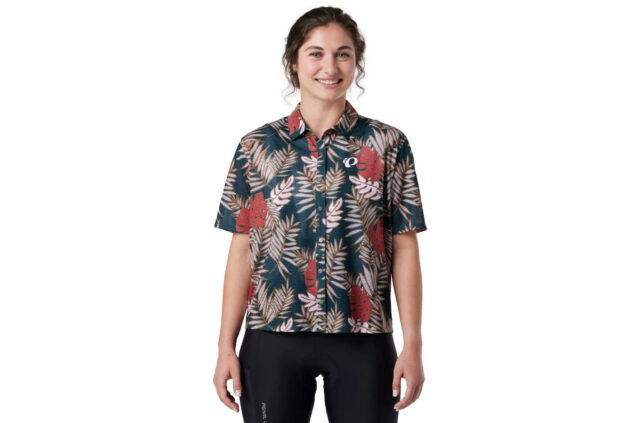
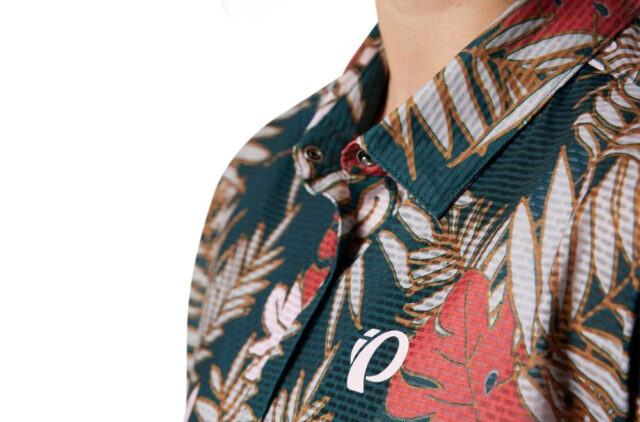
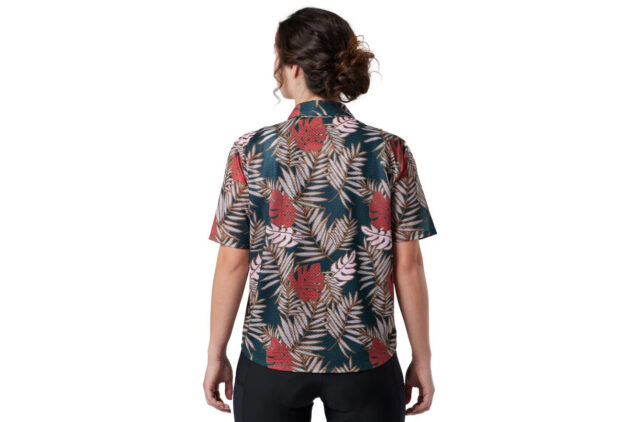
short, but it pairs well with bike shorts or anything that isn’t low-cut. I’ve been wearing the Canyon Tech Snap Jersey on and off my bike for the last month, and I’ve found it pairs well with my hip belt and Curious Creature shorts. The shirt stays tucked into my hipbelt, and the shorts sit above my hips, which keeps my midriff from being exposed. At 5’8”, 135 lbs / 173 cm, 61 kg, I went with a size Medium and have found the fit to be just right for me.
The Canyon Tech Snap Jersey has, as the name implies, snaps for closures. And it also features what Pearl Izumi calls GoFresh technology, which uses HeiQ anti-odor treatment. I recently took the jersey with me on a three-day camping & bike trip, and I found myself wearing the jersey long after my bike ride. With synthetic fabric, my shirts are typically one and done after a long, hot ride, but the Cayon Tech Snap Jersey remained fresh feeling and odor-free the entire weekend.
If you’re looking for a new bike jersey for warm summer riding, the Canyon Tech Snap Jersey deserves a close look.
Backcountry Highliner PrimaLoft Air-Perm Fleece ¼-Zip
MSRP: $99
Luke Koppa: I’ve discussed my experiences with PrimaLoft’s Active Evolve insulation in the past, but to summarize, I think it’s one of the most impressive active insulations on the market in terms of its combo of breathability and warmth.
However, I had only used it in jackets that attached this open-knit, high-loft, fleece-like insulation to some sort of wind- and water-resistant face fabric (e.g., the Sitka Ambient 75 Hoody).
Backcountry’s Highliner collection ditches that face fabric and lets the PrimaLoft Active Evolve insulation serve as the sole fabric of
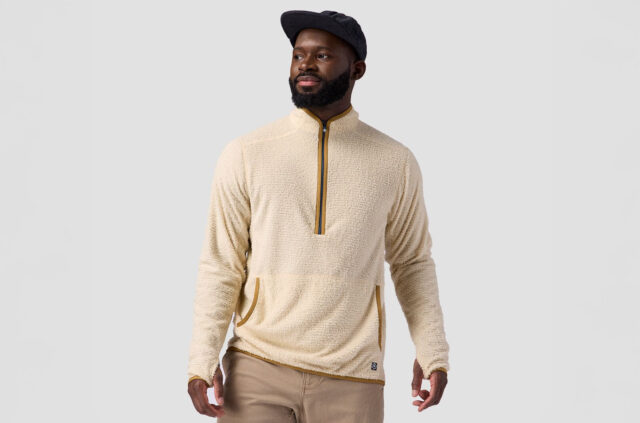
these fleece jackets. The Highliner collection is designed to function as both breathable midlayer insulators and cozy casual pieces, and I’ve been using the ¼-zip version this summer (there’s also a zipper-less hoody variant).
In my experience, these sorts of high-loft fleeces can be exceptionally breathable, but they tend to serve more niche purposes in a layering system since they lose most of their warmth when worn as an outer layer in any significant wind.
That’s still true of the Highliner, but I’ve been liking it as both a comfy casual piece and as a midlayer. When there’s no wind, it’s surprisingly warm for how light its 95-g/m2 (and 100% recycled) fabric is, but it breathes really, really well. That’s made it great for calm-weather summer hikes during the chilly dawn and dusk hours in the mountains, and when I’m just sitting at home and my room is a bit too chilly for a T-shirt but too warm for most other fleeces or lightweight active insulators (e.g., Patagonia Nano-Air Light Hybrid).
I.e., I’d almost describe the Highliner as a high-performance version of a midweight cotton hoody / crewneck. If it’s not windy or you have a wind-resistant layer over it, the Highliner is much warmer than a typical cotton sweatshirt, but it’s also a lot more breathable and dries more quickly. And, while its warmth is comparable to a midweight sweatshirt, the Highliner is far lighter (a scant 7 oz / 198 g for my size Medium).
The best comparison to the Highliner’s fabric that I’ve used is a similar-weight version of Polartec Alpha Direct. They perform quite similarly, but I think the standalone version of PrimaLoft Active Evolve is a tad warmer, similarly breathable, and a bit less prone to grabbing on other layers.
The Highliner ¼-Zip’s fit isn’t very slim nor particularly baggy — fairly similar to a usual sweatshirt fit. It has a minimalist feature set that’s fine by me, including thumbholes, a center zipper that’s actually closer to ½ length, and an open, kangaroo-style pocket on the belly area. I do like that there’s a shock cord for hanging, which also serves as the tightener for the hidden stuff-pocket behind the neck. The collar height is short, so it doesn’t add much warmth to your neck, but it also makes it easy to layer under multiple other jacket hoods / collars.
If I know I’ll be dealing with wind, precipitation, and/or colder temperatures, I’ll keep reaching for something with a face fabric. My current favorite all-round active-insulator for those scenarios is the Sitka Ambient 75 Hoody, which also uses PrimaLoft Active Evolve on the inside. However, the Highliner ¼-Zip will still see a lot of use from me in less complex weather conditions, as a midlayer under a shell during ski season, and in more casual settings where I want something soft and warm that won’t cause me to overheat as soon as the temperature rises a few degrees.
PAKA Sol Hoodie
MSRP: $95
Luke Koppa: Just like merino T-shirts, sun hoodies make up a large portion of my outdoor wardrobe during the summer and shoulder seasons. I recently started testing a new option from the folks at PAKA, who made a name for themselves via their creative uses of alpaca wool and their close work with the Peruvian people who take the fiber from animal to yarn, fabric, and end product (PAKA’s website has more info re: their supply chain, impact, & philanthropy).
The PAKA Sol Hoodie is made of what I’d call a midweight (181 g/m2) fabric. It’s primarily Tencel (67%) blended with alpaca wool
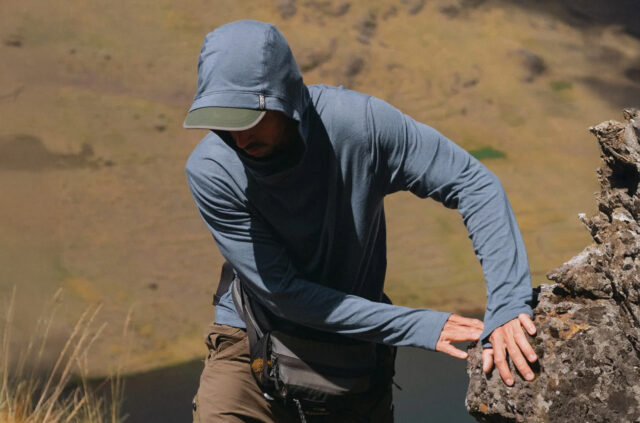
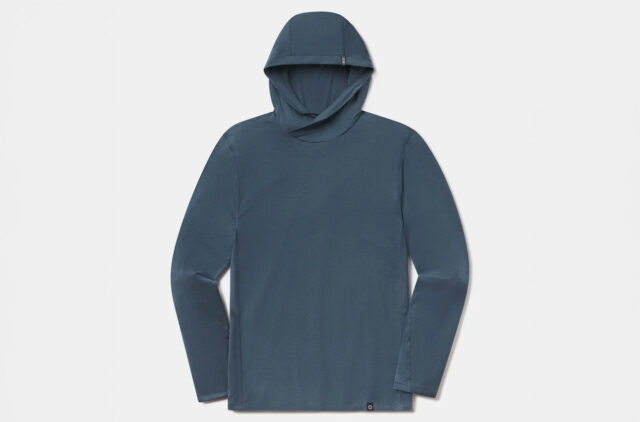
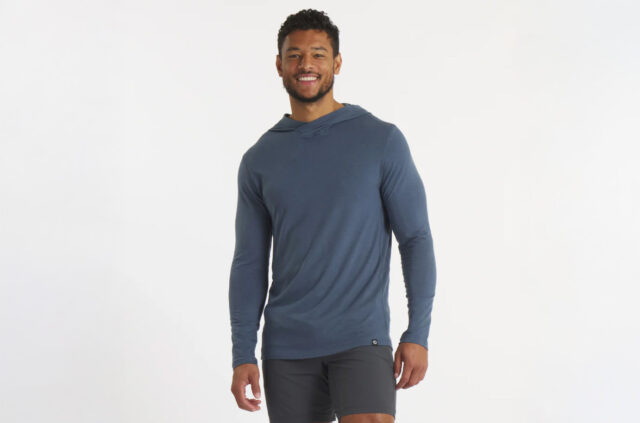
(14%), nylon (14%), and Spandex (5%). As a result, this piece feels more like other cellulose-pulp-based fabrics (e.g., Tencel / Modal / lyocell) I’ve tried, rather than ones predominantly made of wool. That’s not a complaint, though — the Sol Hoodie’s fabric is incredibly soft, stretchy, and comfortable.
It’s also quite breathable and resists odor buildup notably better than cotton or synthetic layers (though not quite as well as most 70%+ wool pieces I’ve tried). PAKA says it has a UPF rating of 30, and I have yet to notice any skin irritation while wearing it as my only upper-body protection from the intense, high-altitude Colorado sun throughout entire days on the water or trails.
The fit is pretty standard for a sun hoodie; not particularly slim but trimmer than my Simms sun hoodies. Related note: I really appreciate that PAKA provides pictures of different people (with their heights listed) in different sizes of the piece to help you get a better idea of the fit; I wish this would become an industry standard for all apparel sold online. I also like the look and feel of this hoodie’s shawl-style neck opening, and its low-profile thumb slots are nice when I need them while being barely noticeable when I don’t.
The Sol Hoodie wouldn’t be my top pick for the hottest weather, or when I know I’ll be getting it soaked with water; in those scenarios, I usually reach for my lightest synthetic options since they tend to be a bit cooler and quicker to dry than those made with natural fibers (e.g., Tencel and wool).
However, the Sol Hoodie is one of the most comfortable I’ve tried, and it breathes well enough to serve as high-altitude sun protection throughout most of the year, as well as a breathable and odor-resistant baselayer when the temperatures drop. Plus, it’s available at what I’d call a very reasonable price.
